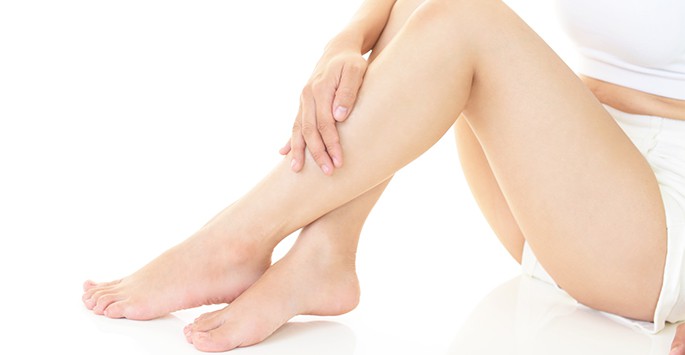
Varicose veins are an unsightly problem that affects many men and women. Varicose veins appear as large, bulging bluish or purplish raised veins on the legs or feet. These veins can cause aching or swelling in the lower extremities that can be uncomfortable. Most people consider these troublesome vein problems a cosmetic issue, but varicose veins can lead to serious health problems.
What Causes Varicose Veins?
Varicose veins are caused by congestion, or high blood pressure, in the veins. A number of factors can contribute to the development of varicose veins. Research has found a strong genetic component in families. Varicose veins can also be caused by pregnancy, when the increased fluids and pressure put additional strain on veins in the lower body.
Individuals who stand for long periods for their jobs often develop varicose veins. Hormonal changes of menopause can also cause varicose veins to appear. Those who are obese are at greater risk for varicose veins in the legs. Individuals with heart valve problems may also develop varicose veins.
Common Varicose Vein Problems
While bulging, bluish veins may be unattractive, they do not always cause discomfort. However, some people will experience heaviness, swelling or throbbing in the veins. In addition, cramping can be severe after sitting or standing for long periods of time. These symptoms often fade after the person sits for a while with their feet up on an ottoman.
The individual may experience itching at the site of the varicosity, or they may notice blood coming from the vein. Ulcers can develop at the varicosity that may recur. Applying a cold compress can help to reduce pain and swelling. Treatment options include laser ablation therapy and ultrasound guided foam sclerotherapy.
Phlebitis
Thrombophlebitis occurs when a clot in a varicose vein blocks the normal flow of blood. Symptoms include redness, warmth and pain at the site, and swelling can occur. When the clot is at the surface, a red, painful cord develops just under the surface of the skin. In deep vein thrombosis, the entire leg maybe swollen and painful. Medications to dissolve the clot, or surgery to remove the vein, may be necessary.
Pulmonary Embolism
A pulmonary embolism is a clot that breaks off from a vein site and travels to the lungs, where it causes pain, difficulty breathing and can be life threatening. The physician must remove the clot surgically. In some cases, a filter may be inserted into the body to prevent clots from traveling through the body in the future.
If you suffer from varicose veins, contact a vein specialist to discuss the options for treating this condition, so you can avoid more-serious health problems.
Anica Oaks
Recent Posts
- Castor Oil For Better Hair Growth: Is It Myth Or Fact?
- Exploring the Differences Between Sermorelin, Ipamorelin, Ibutamoren, GHRP2, and GHRP6: Understanding Their Role in Human Growth Hormone Regulation
- Unraveling the Mystery: Understanding the Causes and Prognosis of Ventricular Tachycardia Without Apparent Heart Disease
- Understanding Grandparents’ Rights in Oklahoma: Navigating Visitation and Legal Protections
- 10 Reasons to Consider Hypnotherapy for Your Health

